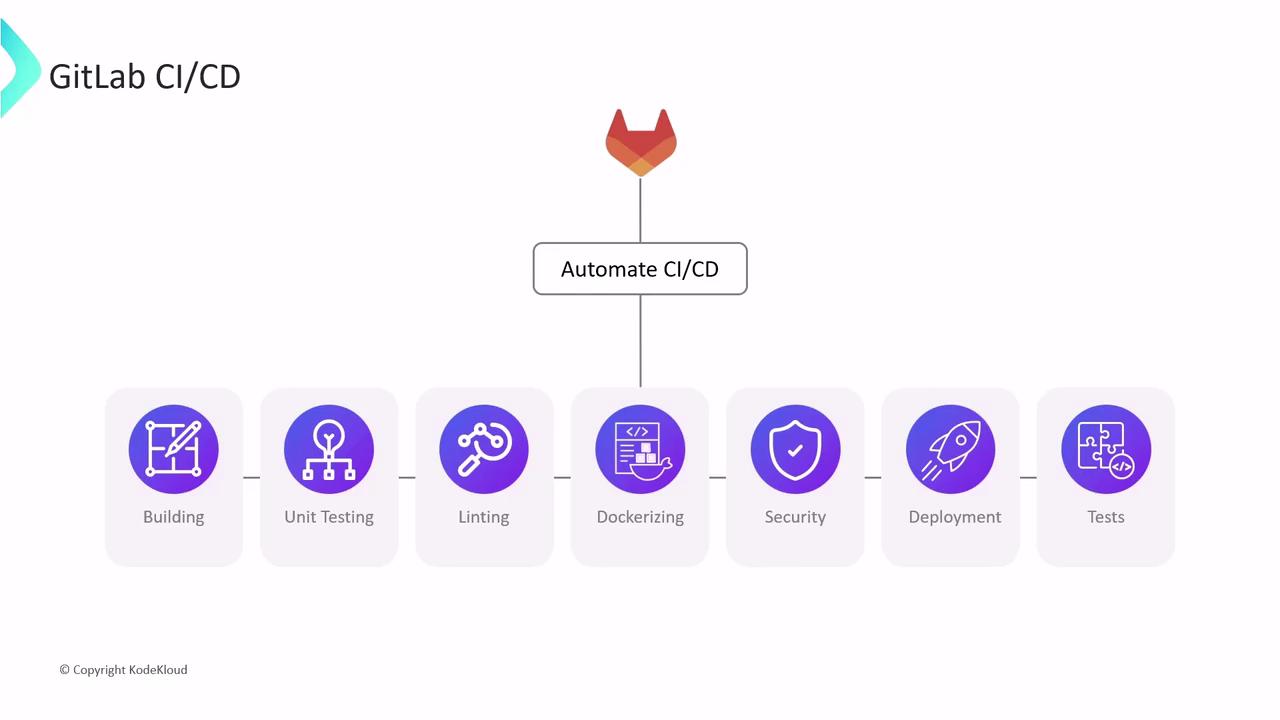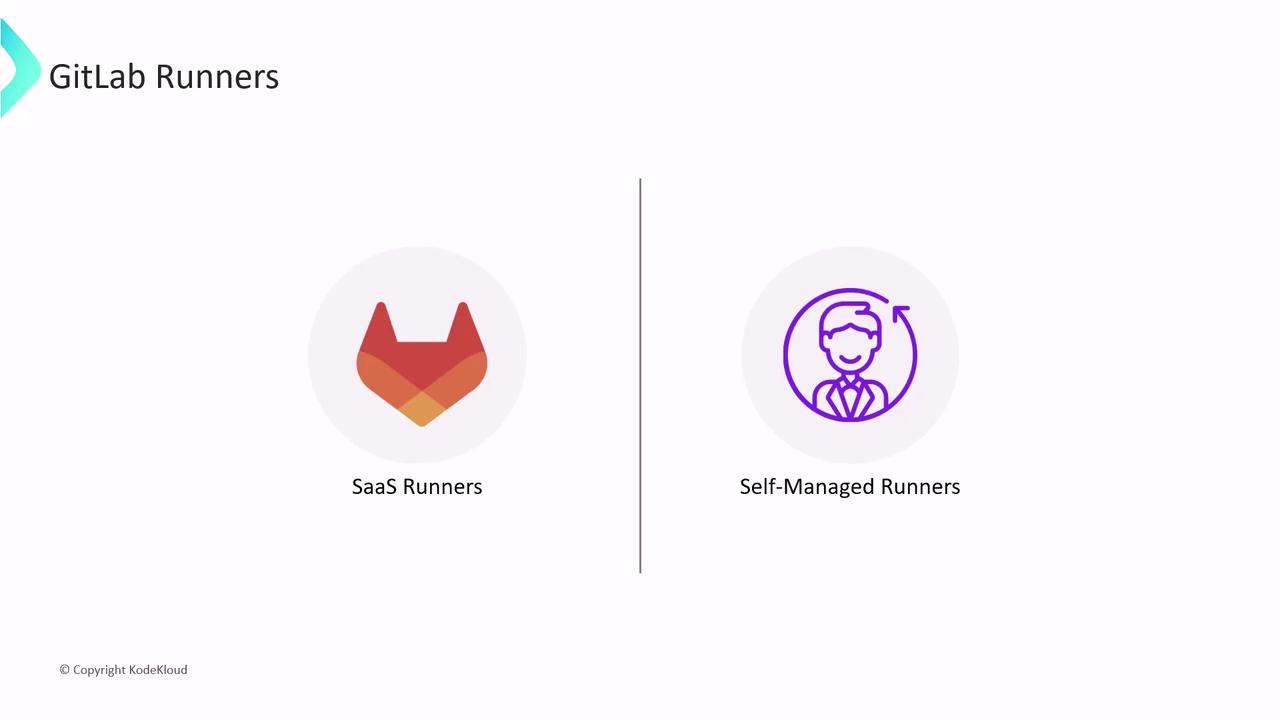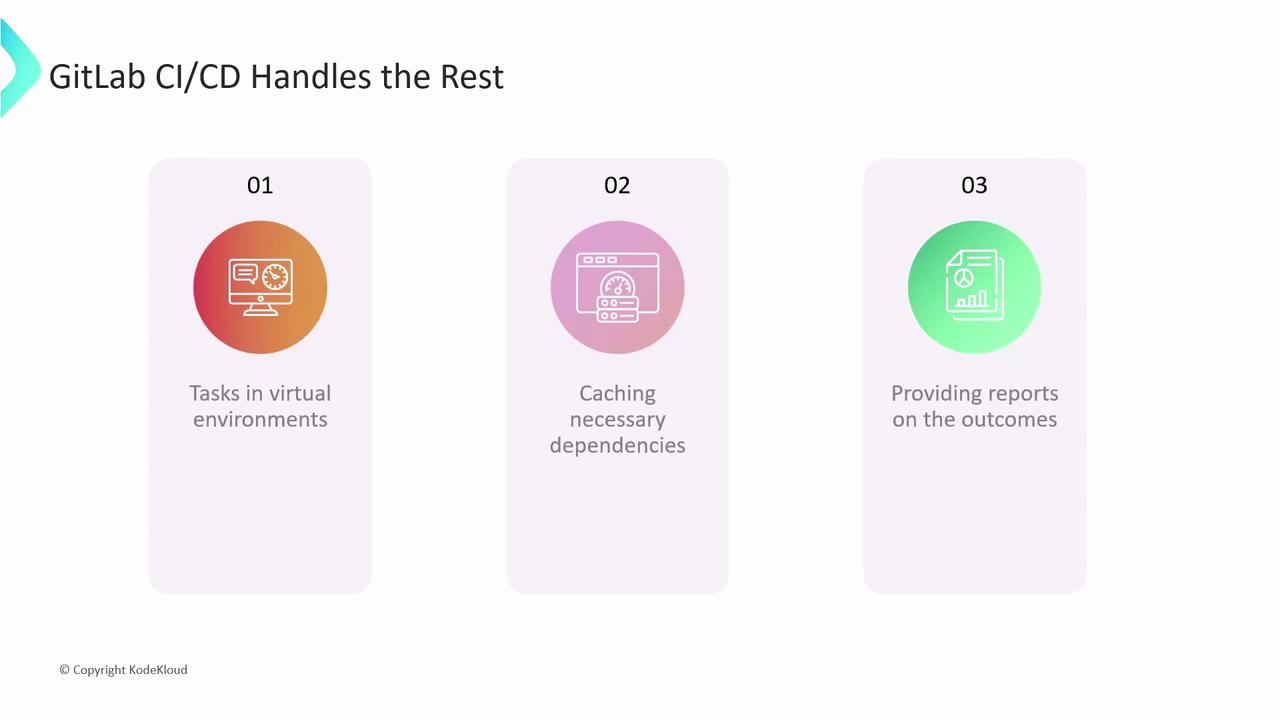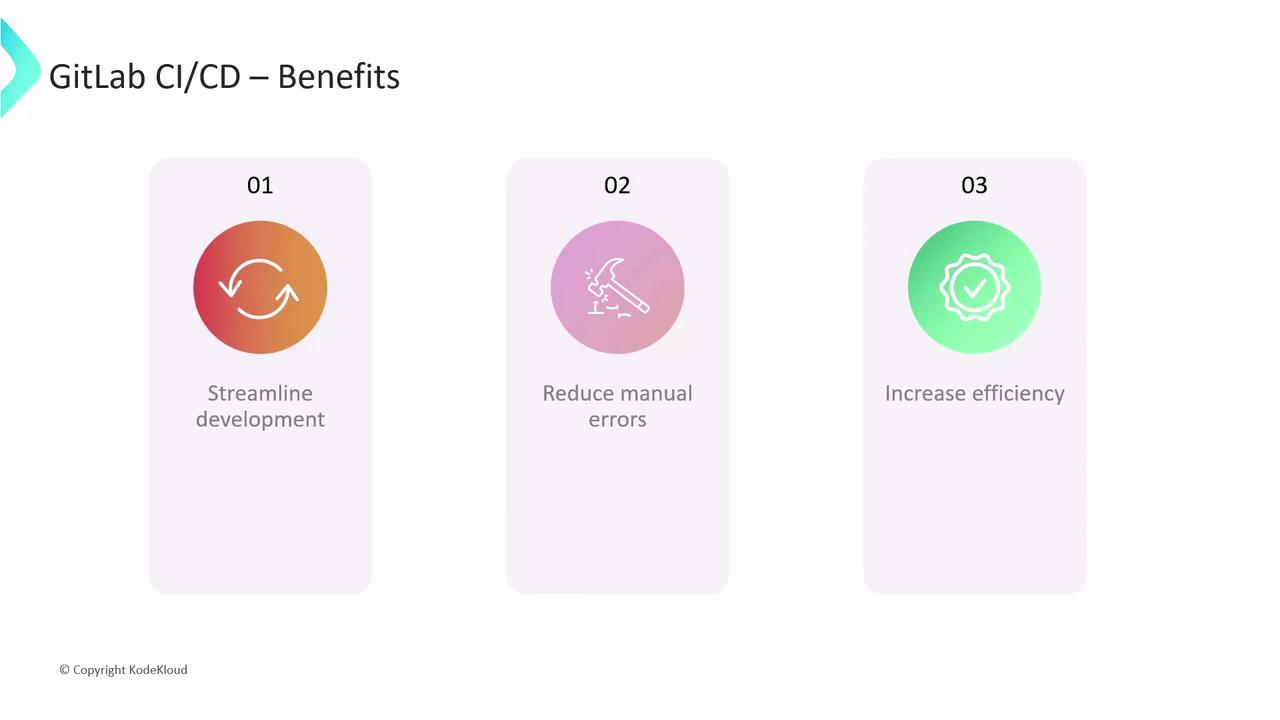GitLab CI/CD: Architecting, Deploying, and Optimizing Pipelines
Introduction
Introducing GitLab CICD
Assume your organization has adopted GitLab as its central repository and now seeks a seamless CI/CD automation solution. GitLab Server is an open-source DevOps platform that consolidates your entire software development lifecycle—version control, issue tracking, CI/CD pipelines, package registries, and more—into a single interface.
Although numerous CI/CD tools exist, leveraging GitLab CI/CD streamlines workflows directly alongside your codebase. In this article, we’ll explore how GitLab CI/CD automates build, test, security, and deployment tasks with minimal configuration.
What is GitLab CI/CD?
GitLab CI/CD is a built-in continuous integration and delivery system that runs pipeline jobs automatically on repository events. You define workflows in a single YAML file, and GitLab handles everything from spinning up environments to reporting results.

How CI/CD Jobs Are Executed
Every job in a pipeline runs on a Runner, a lightweight agent that executes tasks in an isolated environment. GitLab offers two Runner categories:
- SaaS Runners (hosted by GitLab.com)
- Self-Managed Runners (run on your own infrastructure)
Note
This article covers SaaS Runners. Self-managed Runners will be detailed in a separate guide.

SaaS Runners
SaaS Runners are enabled by default for all GitLab.com projects—no additional setup required. Depending on your build requirements, choose from:
| Runner Type | Platform | Use Case |
|---|---|---|
| Linux Runners | Ubuntu, Alpine | Broad language & tooling support |
| Windows Runners (Beta) | Windows Server | Windows-specific builds (PowerShell, .NET, etc.) |
| macOS Runners (Beta) | macOS | Apple ecosystem builds (Xcode, Swift, CocoaPods) |
| GPU-enabled Runners | Linux + GPUs | High-performance workloads (ML training, inference) |
![]()
With SaaS Runners, GitLab manages:
- Provisioning a fresh VM or container for each job
- Caching dependencies to accelerate subsequent builds
- Reporting detailed job status and logs

Automation benefits:
- Streamlined releases—deliver features and fixes faster
- Fewer manual errors—consistent, repeatable deployments
- Improved quality—catch issues earlier in the pipeline

Defining a Pipeline
A pipeline is a sequence of one or more jobs triggered by repository events (e.g., commits, merge requests). To define yours, create a file named .gitlab-ci.yml at your project root:
# .gitlab-ci.yml
workflow:
name: My Awesome App Pipeline
rules:
- if: $CI_COMMIT_BRANCH == 'main'
unit_test_job:
parallel:
matrix:
- OPERATING_SYSTEM:
- saas-linux-small-amd64
- shared-windows
- saas-macos-medium-m1
tags:
- $OPERATING_SYSTEM
image: node:17-alpine3.14
script:
- npm install
- npm test
In this example:
- The pipeline runs only on the
mainbranch unit_test_jobexecutes in parallel on Linux, Windows, and macOS Runners- Each job uses the
node:17-alpine3.14Docker image and runsnpm installfollowed bynpm test
When triggered, GitLab provisions three isolated environments, runs each script in sequence, and reports success or failure. The pipeline succeeds only when all parallel jobs pass.
Viewing Logs and Artifacts
Inspect job logs or download generated artifacts via the GitLab UI or REST API:
- Go to CI/CD > Pipelines
- Select a pipeline to view stages and jobs
- Click a job to see console output and download artifacts (e.g., test reports, binaries)
$ git clone --depth 20 "$CI_REPOSITORY_URL" .
$ git checkout -f 7e0b6435c3 # detached HEAD (main)
$ npm install
> npm install completed
$ npm test
> npm test passed
Cleaning up project directory and file-based variables
Job succeeded
Next Steps
You’ve now learned how to:
- Configure CI/CD pipelines in GitLab
- Choose and use SaaS Runners
- Define jobs, parallel execution, and view logs
Advanced topics—caching strategies, custom Runner setups, multi-project pipelines—are covered in our CI/CD optimization guides.
Links and References
Continue exploring DevOps best practices and unlock the full power of GitLab CI/CD for your projects.
Watch Video
Watch video content